
Have you ever stood in front of your closet, overwhelmed by a sea of clothes, yet feeling like you have nothing to wear? It’s not a lack of options; it’s the silent language of colour that’s throwing you off. Colours hold a power beyond aesthetics – they influence our moods, emotions, and how we’re perceived by others. That’s the fascinating world of colour psychology, and understanding it can be the key to unlocking a whole new level of confidence and self-expression in your wardrobe.
The Colour Chameleon: Unveiling the Emotional Palette
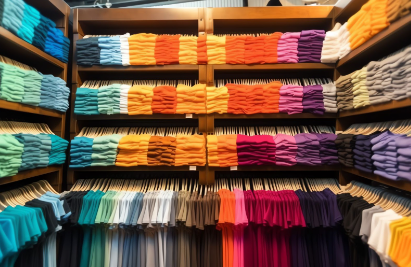
Imagine stepping into a red dress. You instantly feel a surge of energy, a boldness that wasn’t there before. That’s the power of red – the colour of passion, confidence, and power. Now, picture yourself in a calming blue outfit. You feel serene, ready to tackle the day with focus and clarity. Blue evokes feelings of trust, peace, and tranquillity.
Colours aren’t just about individual emotions; they can also influence how we’re perceived by others. Yellow, for instance, radiates warmth and optimism, making you appear approachable and friendly. Green signifies growth, balance, and harmony, perfect for creating a sense of professionalism.
Decoding the Spectrum: A Guide to Colour Families

Colour psychology isn’t just about memorising the meaning of each hue. It’s about understanding how colours interact and create an overall effect. Let’s delve into the two main categories:

Warm Colours: Reds, oranges,
yellows. These evoke
energy, enthusiasm,
and passion. They’re perfect for
making a statement, but be
mindful – too
much warmth can be
overwhelming.
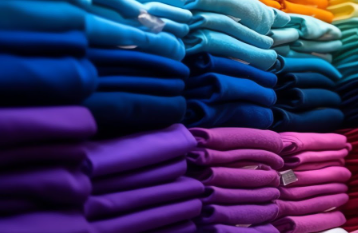
Cool Colours: Blues, greens,
purples. These promote
feelings of calmness,
trust, and serenity.
They’re ideal for creating
aprofessional or sophisticated
look.
Creating Colour Harmony: Mastering the Art of Outfit Coordination
Now that you understand the basics, let’s explore how to use colour psychology to create winning outfits. Here are some key strategies:
- Monochromatic Magic: Embrace a single colour family by playing with different shades and textures. A navy blue blouse paired with dark wash jeans and a cobalt scarf creates a cohesive, sophisticated look.
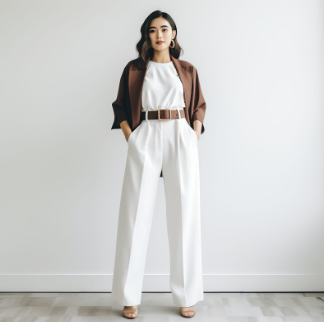
- Complementary Contrast: Find colours that sit opposite each other on the colour wheel, like blue and orange, or green and red. This creates a bold and eye-catching contrast, perfect for making a statement. Start with smaller pops of the contrasting colour to avoid overwhelming the eye.
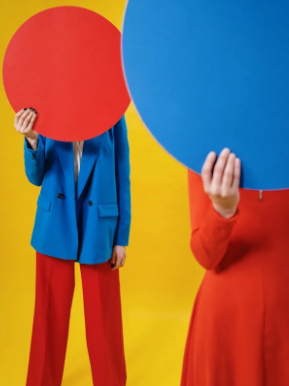
- Analogous Appeal: Neighbouring colours on the wheel create a harmonious and pleasing effect. Think of a light green dress paired with turquoise jewellery and brown sandals. This creates a natural flow and complements your skin tone.
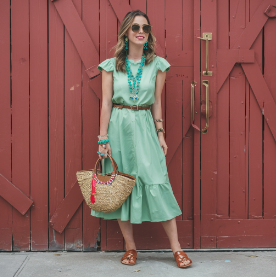
- The Power of Neutrals: Don’t underestimate the power of neutrals like black, white, beige, and grey. They act as a foundation, allowing bolder colours to shine or providing a calming backdrop for a more intricate outfit.
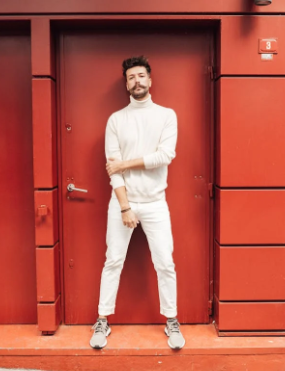
Beyond the Basics: Tailoring Colour Psychology to You
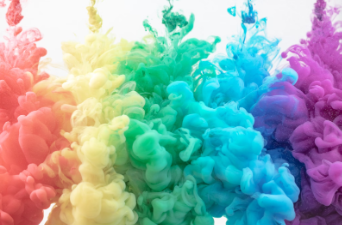
Remember, colour psychology is a guide, not a rigid rulebook. Here’s how to personalise it:
- Consider Your Skin Tone: Warm skin tones pair well with warm colours like gold, yellow, and peach. Cool skin tones look stunning with cool colours like silver, blue, and pink. Experiment and see what flatters you most.
- Embrace Your Personality: Are you bold and outgoing? Opt for vibrant colours. More reserved? Cool colours or neutrals might suit you better. Let your personality shine through your colour choices.
- Occasion is Key: A job interview calls for a different colour palette than a night out with friends. Consider the formality of the event when selecting your outfit.
Unleashing Your Inner Colorist: Putting it All Together

Ready to put your newfound knowledge to the test? Here are some inspiring outfit ideas:
- The Confident Communicator: For a presentation, rock a navy blue power suit with a pop of red in your lipstick or scarf. This conveys professionalism while projecting an aura of confidence.
- The Creative Muse: Feeling inspired? Channel your inner artist with a flowy, emerald green dress paired with a mustard yellow cardigan. This combination is both unique and visually stimulating.
- The Weekend Wanderer: Embrace casual cool with a pair of light wash jeans, a crisp white t-shirt, and a sky blue bomber jacket. This relaxed colour scheme exudes a sense of laid-back confidence.
Pro Tip: The Psychology of Light and Dark
Understanding the psychology of light and dark shades can further elevate your colour game. Lighter shades tend to be more approachable and youthful, while darker shades project power and sophistication. Play with this concept to create outfits that match the message you want to convey.
